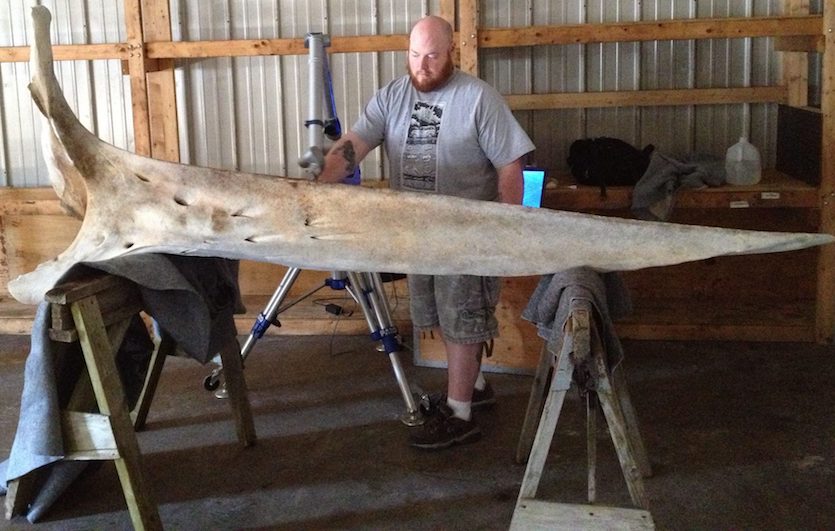ISU Museum of Natural History researchers receive grant to digitally collect 50 of the world’s largest animals
August 28, 2018

POCATELLO – Whales, elephants and bears, oh my! – A team of scientific Noahs at the Idaho Museum of Natural History at Idaho State University has been tasked to digitally collect the skeletons of 50 of the largest animals in the world.
The arc, in this analogy, is the National Science Foundation’s efforts to make 3D scans of all the major vertebrates, animals that have skeletons, available online to researchers and educators.
Technicians from the museum’s Idaho Virtualization Laboratory, which received a $175,000 grant from the NSF, will travel to the University of California, Berkeley, California Academy of Sciences in San Francisco and the Harvard Museum of Comparative Zoology in Boston over two years to make 3D scans of whales, hippos, elephants, rhinos and other large animals.
“We are excited about getting out there and scanning these animals, a lot of which no one else in the world has ever scanned,” said Leif Tapanila, director of the Idaho Museum of Natural History. “It is totally fresh, brand-new stuff. Once you’ve created those digital files, the sky is the limit on how they are used for educators, researchers and others.”
The Idaho Museum of Natural History’s efforts will be led by Jesse Pruitt, Idaho Virtualization Laboratory manager and tech specialist, who will oversee teams of ISU students who will use laser scanners to make 3D digital models of all the bones of 50 different large animals. The ISU students working on this project in the field and in the Idaho Virtualization Laboratory include graduate students and undergraduate Career Path Interns.
“Our laser scanners are still the standard for making really high-resolution 3D images,” Tapanila said. “The only thing that compares to them is a CT scanner or MRI scanner, which are too small for this job.
“This fits in overall with what we’ve done before,” he continued, “and it is a continuation of that niche that we are filling right now in the nation as being able to scan at this level of quality and to deal with this kind of a task. No one else in the country, outside of the Smithsonian, could do this kind of work at this scale.”
Scanning every bone of each of these species will be a painstaking process.
“Quite literally, working with curators and collection managers at the museums, we have to haul out every bone from cabinets, put it on a table, scan the surface, and rotate it and scan every other surface, and then put it all together,” Tapanila said. “We do this for every bone.”
The researchers only scan one side of the animal skeletons, however. Though all these large animals will be challenging to scan, whales may be the most difficult.
“The whales are the tricky ones because not many museums have them because they take up so much space,” Tapanila said. “Whale skulls can be a royal pain. Most whale skulls, especially of the large baleen whales, are so massive, the museums are going to have to winch them up and do all kinds of maneuvers so we get the scans we need.”
Tapanila described ISU’s big-animal scanning project as a module in the National Science Foundation’s umbrella program, Open Vertebrate (oVert) Thematic Collections Network (TCN) that has a goal of scanning more than 20,000 smaller vertebrate specimens. ISU received the grant from the NSF Partner to Existing Networks program.
The co-principal investigator in this project is David Blackburn, of the University of Florida and Florida Museum of Natural History, who is leading the NSF’s oVert efforts.
“NSF recognizes the value that once a species is scanned, it now exists as a digital representation of the animal, and a lot of research and education can stem from that,” Tapanila said. “I can’t even imagine how people will be using this 10 or 20 years from now. The idea is to get at least one example of every major kind of animal, and then over time fill in the blanks of the rarer animals to give full coverage of life on our planet.”
Categories:
